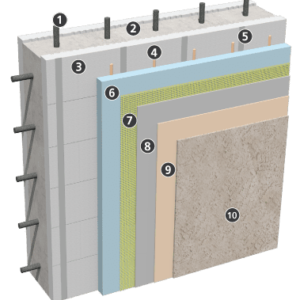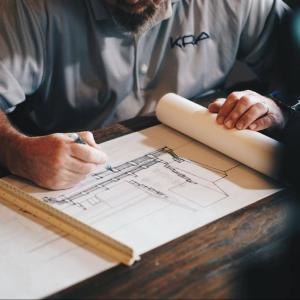The building envelope refers to all of the elements of the outer shell of a building. Also referred to as a building enclosure, this crucial part of a structure is what keeps us safe from the elements of nature. Humanity has come a long way from our prehistoric days of structures constructed of boulders, branches and grass to complex building science that has us living in comfort today.

There are many functions of today’s modern building envelope. According to Wikipedia, these functions can be broken down into three main categories:
- Support (to resist and transfer structural and dynamic loads)
- Control (the flow of matter and energy of all types)
- Finish (to meet desired aesthetics on the inside and outside)
Over time, elements such as structural steel, concrete, brick, stone, glass, insulation and timber all now go into what is now modern building design. All components must be brought together to form an efficient building, and as materials advance along with technology, evolution is constant.
Often referred to as the world’s first skyscraper, the Home Insurance Building in Chicago was erected in 1885 and stood until 1931. The building was designed by William Le Baron Jenney and weighed as much as one third of what were then typical masonry buildings, which concerned city officials. According to History.com,
His revolutionary design utilized an inner skeleton of vertical columns and horizontal beams made out of steel. This was in stark contrast to earlier structures, which were supported by heavy masonry walls. Steel was not only lighter than brick, but it could carry more weight. With this new method of construction, lighter masonry walls could be “hung,” a bit like curtains, from the steel frame. As a result, the walls of the building didn’t have to be as thick, and the structure could be much higher without collapsing under its own weight. Buildings with this type of frame could also have more windows, as the steel frame supported the building’s weight and the stone or brick exterior merely acted as a “skin” to protect against weather.
According to WFM Media, aluminum became a common building material in the first half of the 20th century. Advancements in technology created a stronger, easier-to-form material that overtook the use of bronze for high-end glazing for high-rise construction.
Given the challenge of high-rise construction, American manufacturers developed stick curtain wall systems[…] The next step in the evolution of curtain walling was the move from stick systems assembled on site to pre-assembled units completed in the factory. The advantages quickly became self-evident with the speed of construction using a high-quality product, made on site.
Most recently, the separating the building enclosure into layers and subsystems for those aforementioned support and control functions has been the accepted choice for those in the building design and construction disciplines. Per Building Science Corporation,
The current best practice in building enclosure design emphasizes the use of drainage as a rain control strategy, and demands a well-defined rain control layer, air control layer, and unbroken thermal control layer. Building science research and field experience over the last two decades have demonstrated how powerful the drained approach to rain control can be. However, other changes have also occurred over this time, specifically the use of air barriers, and steadily increasing insulation requirements.


